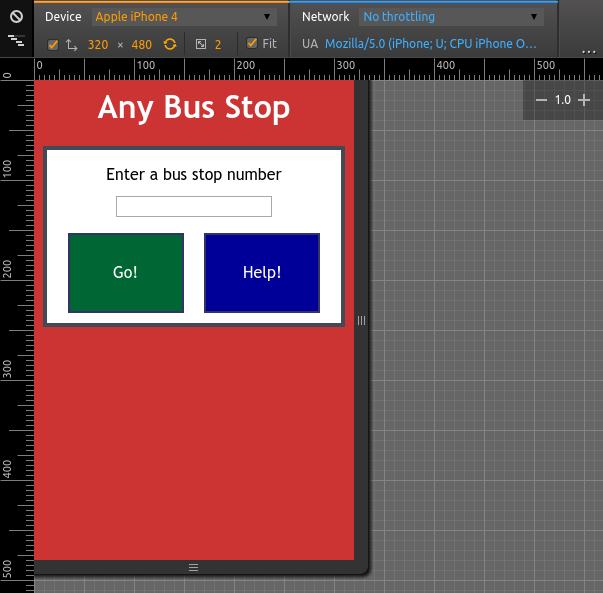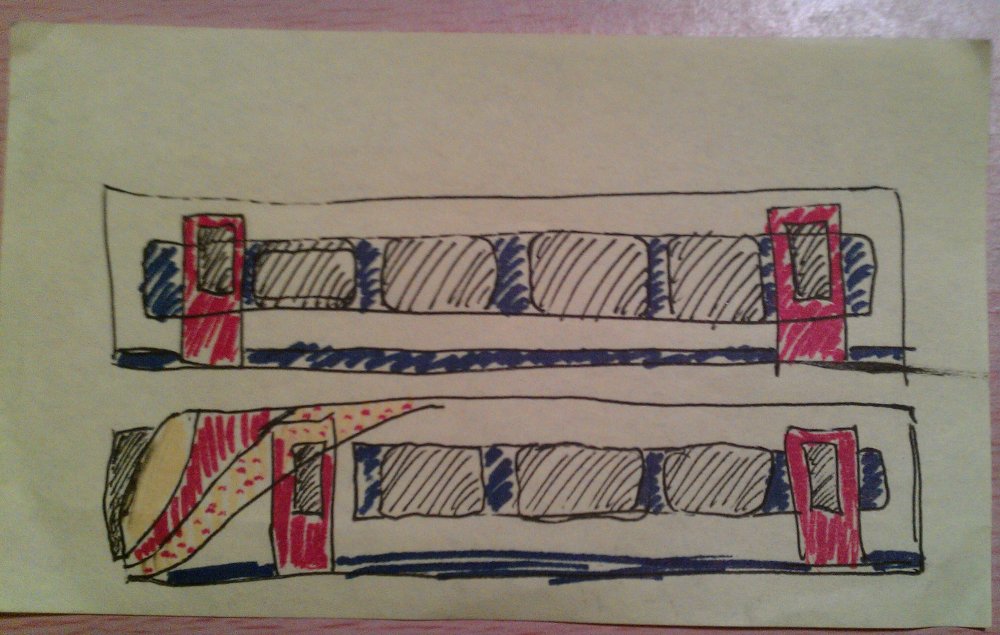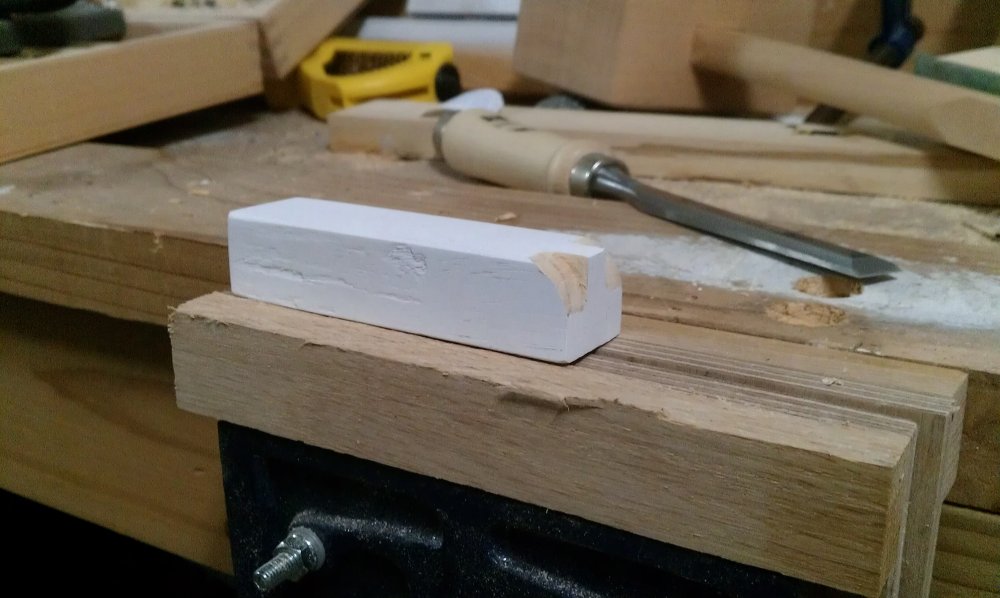So I’ve recently codified what I’m modestly going to call “Maddison’s Law of Microservices” modelled on Godwin’s law
In a nutshell:
As a discussion of microservices grows longer, the probability of a comparison involving Netflix approaches 1
So I’ve recently codified what I’m modestly going to call “Maddison’s Law of Microservices” modelled on Godwin’s law
In a nutshell:
As a discussion of microservices grows longer, the probability of a comparison involving Netflix approaches 1
I always have trouble finding the syntax for writing a method that takes and returns a generic type, and even more frequently the syntax for passing generic types to a generic method (eg, passing a List<Something>). This is a common pattern when deserializing JSON from http responses back into objects. So for my own easy retieval in future, here it is.
First the simple case – a generic method (just wrapping a call to a Javax Response.readEntity)
1 2 3 4 5 6 7 | |
And here’s the syntax of a method that takes a GenericType object as argument (ie, which can take the class of a generic type as an argument), and for the calling that generic method.
1 2 3 4 5 6 7 8 9 10 | |
One of the trickier aspects of this whole game, is what to name the identifier of the type parameter. You cant call it “class” as that’s a reserved keyword and opinion seems to be divided between “clazz” and “klass”. In this example I’ve opted out and called it “type”.
This is another “documenting my own stupidity” post. I’m hoping the public self-ridicule will help stop me from being so short sighted in the first place.
I’m sure lots of people use the following pattern. You write a method that takes a heap of arguments, but which can have some defaults. You then introduce one or more overloads, with progressively fewer arguments, and sensible defaults filled in.
To avoid duplication of your actual logic, the overloads only add the defaults, and then call the original, many argumented method. For example:
Original pattern:
1 2 3 4 5 6 7 8 9 | |
So that was fine, But then things moved on, and I needed to introduce a little more complexity in the form of an unknown number of arguments using varargs. So I simply added a new method, migrated the logic and refactored to something like this:
1 2 3 4 5 6 7 8 9 10 11 12 13 14 15 16 | |
The middle method in the above snippet doesn’t work (and throws infinite recursion warnings) as it simply calls itself, rather than the varargs method with a single argument.
What confused me is that I googled about a bit, and couldn’t find any discussion of what to do in this case, so I tried the following, and felt pretty pleased with myself.
1 2 3 4 5 | |
But of course – I was completely missing the point. I didn’t need the single argument overload as calls with a single argument already call the varargs overload! So it just needs deleting – and happy days.
1 2 3 4 5 6 7 8 9 10 | |
1 2 | |
Works fine if you delete the single argument method. Of course. Face palm.
I installed NVM to manage node installation, but was irritated, because I had to run “nvm install” or “nvm use” every time I opened a new bash session.
It turns out there is a poorly documented feature, the .nvmrc file. Simply drop one into your project folder, and in it just put the version number of node (or one of NVM’s aliases, such as ‘stable’).
1
| |
As simple as that! Then open a new bash session and browse to your folder, node should be up and running.
TL:DR If you’re at an unfamiliar bus stop in London and don’t know when the next bus is arriving, visit this little page that I’ve written to help find bus stop departures pages. Just type the number into the box and hit ‘Go’!

Longer: All this does is provide a light, mobile optimised (ish – see below) page that redirects you to TFL’s existing mobile departures pages. It’s pointless, and TFL do have such a page of their own now. But most of my pet projects are more about having fun and solving a problem.
So, for this project I’ve used some things, and learnt some things:
It’s also my first (fairly unsuccessful) attempt at a mobile first design. It’s already looking better than it did thanks to some of my awesome colleages helping me out a bit.
It’s all on github here (unusual for me, as I usually use bitbucket). Pull requests welcome.
PS – I think this would be awesome on a .London domain name, but they cost about £30, so that’s not happening unless someone want’s to sponsor me!
This is a writeup of how I made a custom toy South West Trains class 444 for my 2 year old niece. Or at least, a writeup of the bits I can remember.
The first thing I did was lookup a photo of the relevant train (google images) and doodle a sort of caricature of it onto a post-it note one lunchtime at work. The gist was to simplify the look so that it would look reminiscent of the real thing but sufficiently “toy like” that it doesn’t look over detailed and fussy on a model only 11cm long.
For example – 10 windows becomes 4, or even 3 on the driving ends, the driver’s door vanishes, as do the corridor’s between coaches and lots of little outline details etc etc.

I formulated a plan to find an existing Brio compatible train, cannibalize the wheels and bogies, knock up a new wooden body, and join it all back together. Then I discovered that BigJigs sell a wagon that is simply a rectangular block already.

I bought six of these, sanded off all the paint, unscrewed the bogies and wheels, and sprayed them with a toy-safe aerosol white primer/undercoat. I then carved the ends into a simple approximation of the driving ends of the class 444 trains.

Next I learnt how to use Inkscape (this was actually a bit of a joy to learn and use) and drew up a design as an SVG. I drew the side view first, which I then extended to span the roof and opposite side. The full drawings are available to download from bitbucket here. They’re free for your own use, legal bit follows:
This work is licensed under the Creative Commons Attribution-NonCommercial-ShareAlike 4.0 International License. To view a copy of this license, visit http://creativecommons.org/licenses/by-nc-sa/4.0/.
The simplified side-only view is shown below.
The first attempt at getting the design from computer to toy was not successful. I read that you can use iron-on inkjet t-shirt transfers on wood. The short answer is you can’t. The longer answer is that when you heat it with an iron, the transfer melts and becomes very slimy and slippy, at which point it slips and smears all over the place. Your mileage may vary, but I gave up.
The second plan was to try getting some inkjet water-transfer paper. But because I was up against a deadline (Christmas) I ran out of time to order some off the internet. I’d still like to try this, but at the time I fell through to plan C.
My final attempt was simply to print the design out on paper, and glue it onto the model. I painted the ends black and yellow by hand. The end result actually looks OK. I then lacquered the whole thing with a toy-safe semi-gloss aerosol varnish/lacquer. When it was all dry, I simply screwed the bogies back on (making sure to check the magnetic couplings were in north/south matched pairs, and that the two driving cabs had the opposite polarity, so they would join together) and I was done.
A quick note on toy safety. There are lots of European standards on things like toxicity of paints, and more importantly – small parts that could be a choking hazard. This model probably doesn’t meet them, and you should treat these as novelty/models not toys for tiny children (at least not children so tiny that they still chew on everything they see). For toy safe paint and Varnish, check out the Painter’s craft range from Rust-Oleum (check the label to make sure, as not all Rust-Oleum products are safe). Or look for any paint that conforms to the EN-71 standard.
And that is how I arrived at the final result. Let me know if you like it, or if you try it for yourself.

If you come across a pipe (or bar) symbol in an angularJS expression, and don’t know what it means, it’s a Filter (effectively formatting options).
I had remarkable trouble googling for this problem, hence this keyword laden post. Basically if you come across a single pipe (or bar) symbol inside double curly brackets then you might think that this is a mistyped OR symbol, or if you’re a bit more JS savvy, a bitwise shift operator. In fact you have to remember that angular expressions are not vanilla javascript – they are parsed by angular itself and have their own syntax. The single pipe is in fact a filter operator which slightly confusingly is often used to format numbers, for example with localised decimal seperators.
I had to go on quite a google treasure hunt to find that out, so hopefully this can act as a bit of a signpost for the curious in future.
My Brother is a bit of a train geek, a few years ago I made him a tiny railway as a Christmas present.
So this year I’ve made him and my 2 year old niece a joint Christmas present of a custom, one of a kind Brio style train, which is an accurate (ish) caricature of a SouthWest trains class 444 Desiro. These little wooden trains are awesome, I’ve never met a toddler who didn’t like them. There are a bunch of different manufacturers, of which Brio is just the most famous.
Some of the models are just generic “toy trains” but others are models of real trains past and present, but they’re mostly based on either German and American trains. So I made some that look like the trains you can see at my brother’s local station in Petersfield, specifically, a SouthWest Trains Class 444.
Here’s the end result:

Full details of how I built it, and the designs for the sides and top to follow in another blog post (if I get around to it).
I got around to it! I’ve written up how I made the trains in another blog post.
A relatively effective equivalent to “which” in powershell is as follows.
(Get-Module (Get-Command Some-PowershellModule).ModuleName).Path
Very quickly – I’ve been playing with Babylon JS to do some WebGL animations. I’ve got a scene to draw but am having trouble with animations. Here are the results so far:
You can fly around with the cursor keys and mouse (Babylon default behaviour). Then hit the ‘a’ key to trigger an animation (and an error – after which you can’t fly around any more!) [Edit – fixed thanks to the peeps over at the HTML5 game devs forum]
The whole reason I wanted to do this was for fun, and to try and provide a visualisation for this 3d dogfight Code puzzle, but someone beat me to it, so now it’s just for fun.